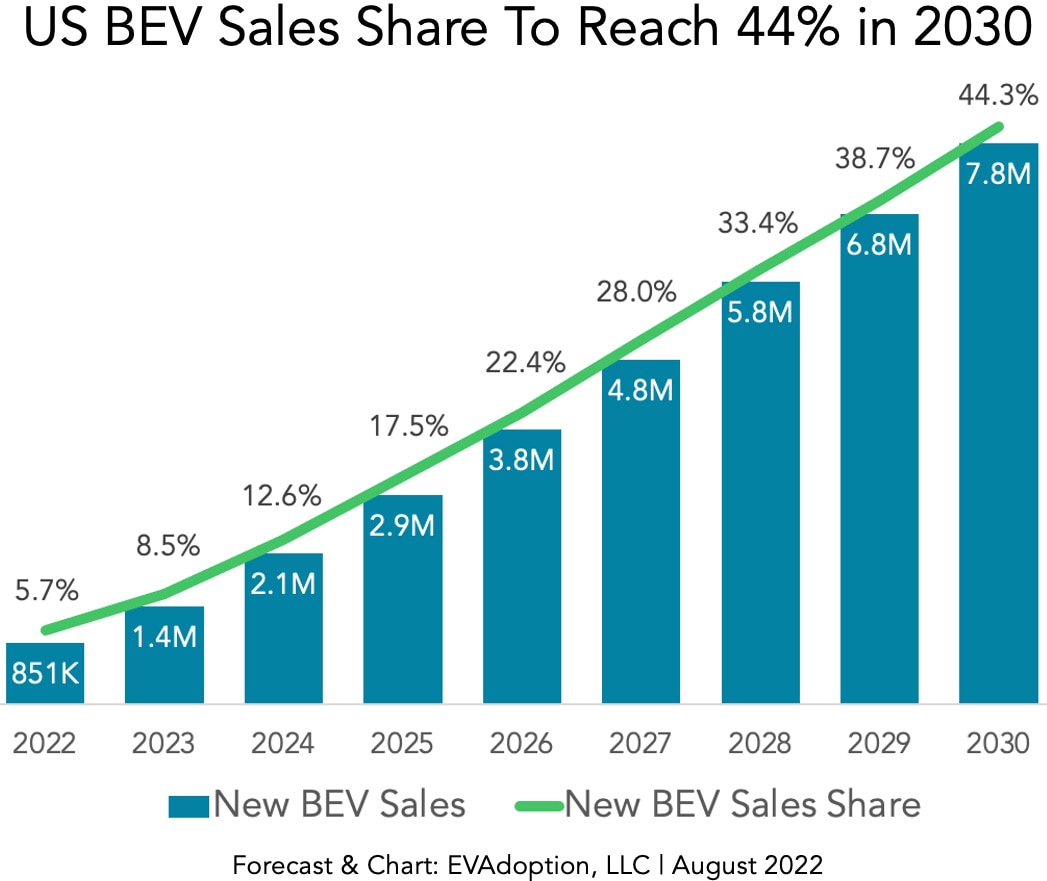Breaking Down California's Proposed 2035 ICE Ban
Find out how the state's push for electric cars will affect future new-car choices.
Article QuickTakes:
Shockwaves from a different kind of quake rippled out from California in August 2022 when the state announced its pending requirement that all new passenger cars, trucks, and SUVs sold there will create zero emissions by 2035. Essentially, this means internal-combustion-engine (ICE), fossil-fuel vehicles that rule the roads today get the boot, and electric cars take over. Although the auto industry has not historically welcomed new regulations, in a significant turn of events, automakers find their stated electric vehicle (EV) goals in alignment with California's 2035 ICE vehicle ban.
What Are the Details of the California ICE Ban?
Formally known as the Advanced Clean Car II Regulations, the state's proposed mandate takes effect in stages, requiring 35% of new-car sales to be zero-emission vehicles (ZEVs) in 2026 and 68% in 2030 before reaching 100% five years later. California's plan includes state support for the shift to ZEVs with $2.4 billion for vehicle purchase incentives, charging infrastructure, and public outreach.
Critically, the Golden State's EV mandate will neither ban used ICE vehicle sales nor ownership. So residents can keep driving their gas-burning models, including classic cars.
Under the proposed ZEV mandate, battery-electric vehicles (BEVs) must offer at least 150 miles of range on a charge. Of the 32 BEV new models on sale in the U.S. in September 2022, BMW's Mini Cooper SE and Mazda's MX-30, with respective 114-mile and 100-mile ranges, fall short of that requirement. All the other models achieve between 215 and 520 miles of range, and this metric continues to trend upward.
To give consumers more vehicle choices, California's ZEV mandate will allow plug-in hybrid electric vehicles (PHEVs) to account for up to 20% of the sales mix. California's new rules specify at least 50 miles of battery-only range for these vehicles. Four of the 34 PHEVs available in September 2022 had a battery range of 40 miles or higher, but automakers have time to improve on this.
Will California's ICE Ban Influence Other States?
If you gave minimal thought to auto emissions regulations before, California's ICE ban probably came as a surprise. The state, however, has been steering toward a ZEV policy for decades, part of its historical pursuit of reducing auto pollution.
In 1966, when some California cities were grappling with the nation's worst smog conditions, the state imposed its first tailpipe emissions regulations. The U.S. Clean Air Act of 1970 then authorized the state to set its own separate and stricter vehicle emissions regulations apart from federal standards. It does this through the California Air Resources Board.
Since then, 17 other states have adopted CARB's regulations to control auto emissions, as well as the ICE ban. Loren McDonald, CEO of EVAdoption, believes 10 additional states will implement the policy. Washington and New York have announced their plans to do so. Today, 45 states and the District of Columbia offer financial incentives to encourage EV purchases.
Does the U.S. Government Support or Oppose California's ICE Ban?
At the federal level, the current administration has expressed a goal of new-car sales reaching 50% EV market share by 2030 (although it has not endorsed an outright ICE ban). In addition, the federal government is providing $5 billion to support EV growth, which includes support for installing EV chargers covering approximately 75,000 highway miles running through all 50 states.
California's ICE ban already faces a political challenge. In May 2022, the Biden administration restored the state's right to set its own emissions standards after the Trump administration had rescinded it. In response, 17 Republican state attorneys general sued to revoke it again. Even if the opposition prevails, automakers have not signaled a willingness to reverse course on their stated EV transition plans.
 EVAdoption
EVAdoption
Are Automakers Ready for ICE Bans?
According to EVAdoption's McDonald, electric car sales in California rose steadily before the state announced its ICE vehicle ban. EVs ended up accounting for 17% of California's new vehicle sales in 2022. He expects the state to achieve its stated benchmarks. What's more, McDonald projected total U.S. EV sales share to rise rapidly, from about 7% in 2022 to 44% in 2030.
"More than half of the 2.7 million EVs on the road in the U.S. were sold in the last 18 months," he added.
Tesla currently dominates EV sales in California and the U.S. The Texas-based company accounted for 72% of California's EV sales in 2022. Other automakers are poised to introduce a huge EV wave over the next few years. The number could swell to about 180 models in 2025.
"It snowballs from there," said McDonald, who estimates consumers will have 294 EVs from which to choose by 2030.
In the near term, General Motors expects ZEVs to account for 40% of its model line in 2026, and both GM and Ford plan full ZEV model lineups by 2035. The automakers recently expressed support for the new California regulations.
"The CARB Advanced Clean Cars II rule is a landmark standard that will define clean transportation and set an example for the United States," said Bob Holycross, Chief Sustainability Officer at Ford. A GM media statement said, "General Motors and California have a shared vision of an all-electric future, eliminating tailpipe emissions from new light-duty vehicles by 2035."
Are Other Countries Considering Ice Bans?
California and states that adopt the ICE ban will have international company. Canada announced a phase-out schedule that nearly tracks California's. The United Kingdom's ICE ban is scheduled to take effect in 2030. Meanwhile, the European Union has endorsed a plan to eliminate automotive carbon emissions by 2035, which means only new EVs could be sold. A portion of the 27 EU countries has also called for a compromise to extend the deadline to 2040.



